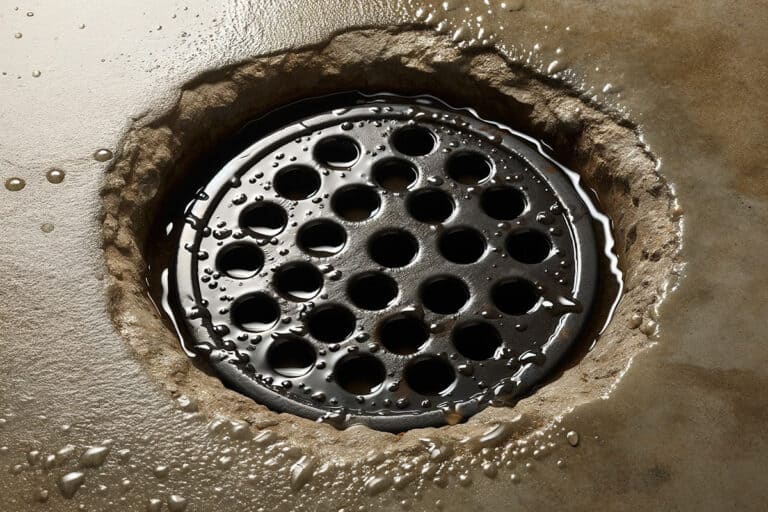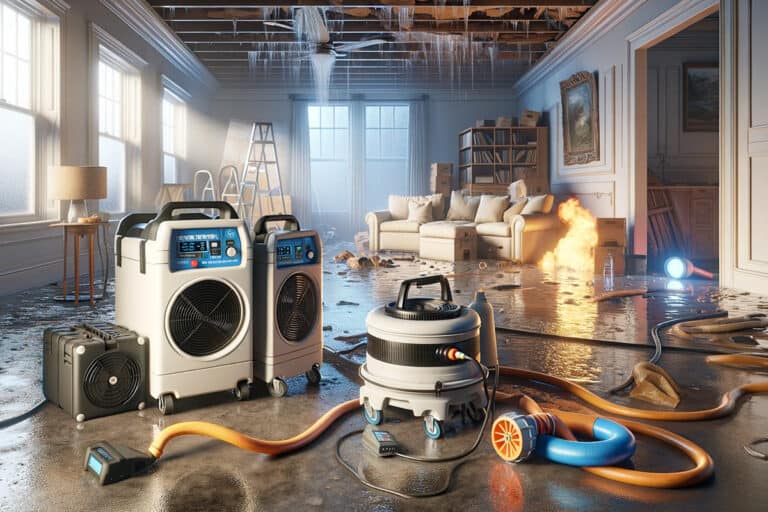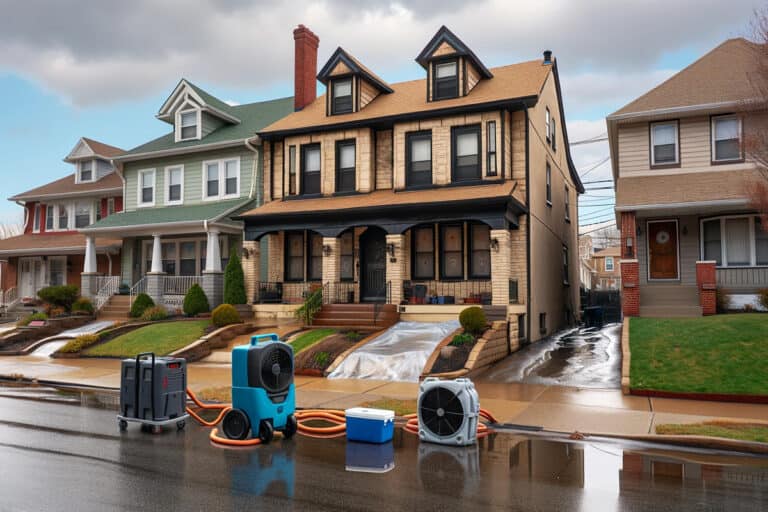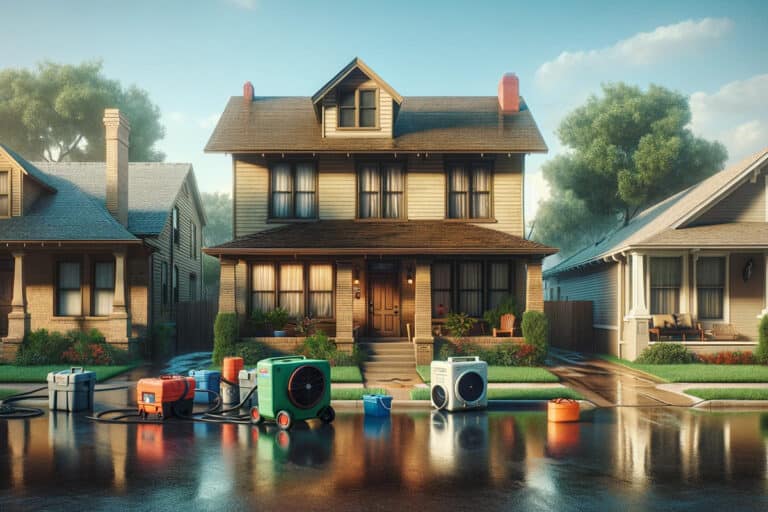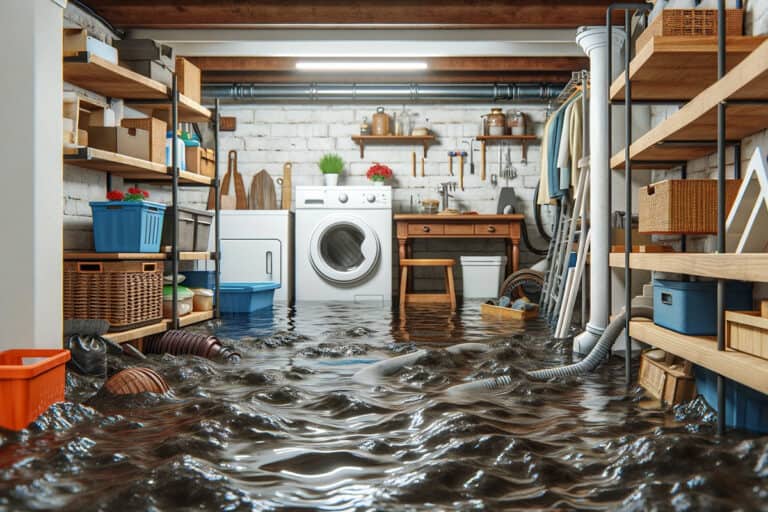Disclosure: I am compensated for purchases made through some links on this site. Click for details.
Water damage is one of the most common and costly problems that can affect your home or business. But not all water damage is the same. Depending on the source and level of contamination, water damage can be classified into three categories.
In this blog post, we will explain what each category means, how to identify them, and what steps you should take to restore your property and protect your health.
Category 1: Clean Water
Category 1 water damage refers to water that originates from a sanitary water source and does not pose a substantial risk from dermal, ingestion, or inhalation exposure.
Examples of Category 1 water sources can include:
- Burst or leaking pipes
- Faucets or sinks
- Supply lines
- Rainwater or snowmelt
- Toilet tanks or bowls (without contaminants)
Category 1 water is considered “clean” because it does not contain harmful microorganisms or chemicals. However, this does not mean that it is safe to drink or use for personal hygiene. Category 1 water may still contain dissolved minerals, metals, or other substances that can affect its taste, odor, or color.
Category 1 water damage is usually the easiest and least expensive to repair, as it does not require extensive cleaning or disinfection. However, it is important to act quickly and dry the affected materials as soon as possible. If Category 1 water is left untreated for more than 24-48 hours, it can deteriorate into Category 2 or 3 water, as it may come in contact with dirt, dust, mold, bacteria, or other contaminants.
Category 2: Gray Water
Category 2 water damage refers to water that contains significant contamination and has the potential to cause discomfort or sickness if contacted or consumed by humans.
Examples of Category 2 water sources can include:
- Washing machine or dishwasher overflow
- Sump pump failure
- Hydrostatic pressure seepage – commonly found in basements or slabs
- Toilet overflow – urine but no feces
- Aquarium leakage
Category 2 water is considered “gray” because it is not as clean as Category 1 water, but not as dirty as Category 3 water. It may contain organic matter, bacteria, viruses, fungi, chemicals, detergents, or other pollutants that can affect its quality and appearance.
Category 2 water damage requires more thorough cleaning and disinfection than Category 1 water damage. It is recommended to remove any wet carpet padding and porous materials that cannot be salvaged. It is also advisable to use an anti-microbial spray and a HEPA vacuum to disinfect the affected surfaces and prevent mold growth.
Category 3: Black Water
Category 3 water damage refers to water that is grossly contaminated and can contain pathogenic, toxigenic, or other harmful agents and can cause significant adverse reactions to humans if contacted or consumed. Examples of Category 3 water sources can include:
- Sewage backup
- Toilet overflow (with feces)
- Flooding from rivers, streams, or seawater
- Groundwater infiltration
- Moldy or stagnant water
Category 3 water is considered “black” because it is the most dangerous and unsanitary type of water damage. It may contain human or animal waste, parasites, bacteria, viruses, fungi, pesticides, heavy metals, or other toxic substances that can cause serious illness or infection.
Category 3 water damage requires the most intensive and professional restoration process. It is essential to remove all affected materials that cannot be decontaminated, such as insulation, drywall, carpeting, furniture, cushions etc. It is also mandatory to use an anti-microbial spray and a HEPA vacuum to disinfect the remaining structures and items. In some cases, it may be necessary to perform air quality testing and mold remediation to ensure a safe and healthy environment.
Comparison Table of Water Damage Categories
| Category | Description | Common Sources | Risks | Recommended Actions |
|---|---|---|---|---|
| 1: Clean Water | Originates from sanitary sources; minimal risk | Burst pipes, rainwater, leaking faucets | Mild, if treated quickly | Dry area quickly, monitor for signs of mold |
| 2: Gray Water | Contains contaminants; can cause illness | Dishwasher overflow, sump pump failure | Moderate, requires cleaning and disinfection | Remove wet materials, clean and disinfect area |
| 3: Black Water | Grossly contaminated; can cause severe illness | Sewage backup, flooding from rivers | High, requires professional restoration | Evacuate area, call professionals for restoration |
Deterioration of The Categories
It’s important to note that if left untreated for more than a day or two Category 1 Water Damage can deteriorate into Category 2 Water Damage which requires more thorough cleaning and disinfection than Category 1 Water Damage. Similarly if left untreated for more than two days Category 2 Water Damage can deteriorate into Category 3 Water Damage which requires the most intensive professional restoration process.
How to Deal with Water Damage
Regardless of the category of water damage you are facing, it is important to take immediate action to prevent further damage and health risks. Here are some general steps you should follow if you encounter water damage in your home or business:
- Turn off the main water supply and electricity to the affected area, if possible and safe to do so.
- Contact your insurance company and report the water damage claim. Take photos and videos of the damage and keep a record of all expenses and repairs.
- Call a professional water damage restoration company to assess the situation and provide you with a comprehensive and effective solution.
- Avoid contact with the water or any contaminated materials. Wear protective gear, such as gloves, boots, masks, and goggles, if you have to enter the area.
- Move any valuable or salvageable items to a dry and safe place. Discard any items that are beyond repair or pose a health hazard.
- Ventilate the area by opening windows and doors, or using fans and dehumidifiers, to speed up the drying process and reduce the risk of mold growth.
Navigating Insurance Claims
Homeowners insurance covers sudden accidental internal causes of Water Damage such as burst pipes but does not cover gradual damage like leaking bathroom sinks nor does it cover flooding from external sources like storm surge during a hurricane. Flood insurance is a separate policy that can protect from flood-related damages.
What Types of Water Damage are Covered by Homeowners Insurance?
Water damage covered by homeowners insurance typically includes:
- Burst pipes
- Accidental leaks from leaking plumbing or appliance leaks like a broken washing machine or dishwasher
- Water damage after a fire from water used to extinguish the flames such as water from a sprinkler system or from the fire department’s hose
However, some types of water damage may be excluded from coverage, such as water damage resulting from seepage, faulty plumbing, or flooding from external sources like storm surge during a hurricane. Flood insurance is a separate policy that can protect you from flood-related damages.
Table: Insurance Coverage Chart
This table breaks down what types of water damage are typically covered by homeowners insurance and what requires additional flood insurance.
| Type of Damage | Homeowners Insurance | Flood Insurance |
|---|---|---|
| Burst Pipes | Usually Covered | Not Required |
| Appliance Leaks | Usually Covered | Not Required |
| Water from Extinguishing a Fire | Usually Covered | Not Required |
| Flooding from External Sources | Not Covered | Required |
| Gradual Damage (e.g., seepage) | Not Covered | Not Applicable |
DIY vs. Professional Restoration for the 3 Categories of Water Damage
Depending on the category and extent of water damage you are facing, you may be tempted to try to fix it yourself over hiring a professional restoration company. While some minor water damage incidents may be manageable with DIY methods, such as using fans, dehumidifiers, or bleach, most water damage situations require professional intervention to ensure a safe and effective restoration.
Here are some reasons why you should hire a professional restoration company for the 3 categories of water damage:
- Category 1 water damage may seem harmless, but it can quickly turn into Category 2 or 3 water if not dried properly and promptly. A professional restoration company has the equipment and expertise to dry the affected materials thoroughly and prevent mold growth and deterioration.
- Category 2 water damage poses a health risk due to the contamination level of the water. A professional restoration company has the knowledge and tools to clean and disinfect the affected materials safely and effectively. They can also remove any unsalvageable items and dispose of them properly.
- Category 3 water damage is the most dangerous and requires the most intensive restoration process. A professional restoration company has the training and certification to handle Category 3 water safely and comply with industry standards and regulations. They can also perform air quality testing and mold remediation to ensure a healthy environment.
Hiring a professional restoration company for the 3 categories of water damage can save you time, money, and stress in the long run. They can also guarantee the quality of their work and provide you with a warranty for their services.
TAble: DIY vs. Professional Restoration Table
This table compares the scenarios in which you might consider DIY restoration versus when to call the professionals, based on the water damage category.
| Scenario | DIY Restoration | Professional Restoration |
|---|---|---|
| Category 1 Water Damage | Possible, if the area is small and you act quickly | Recommended for larger areas or if water is left standing |
| Category 2 Water Damage | Not Recommended | Strongly Recommended |
| Category 3 Water Damage | Not Recommended | Mandatory |
FAQS for Water Damage Restoration Categories
Conclusion
Water damage can be classified into three categories based on the source and level of contamination.
- Category 1 water damage refers to water that originates from a sanitary water source and does not pose a substantial risk from dermal, ingestion, or inhalation exposure.
- Category 2 water damage refers to water that contains significant contamination and has the potential to cause discomfort or sickness if contacted or consumed by humans.
- Category 3 water damage refers to water that is grossly contaminated and can contain pathogenic, toxigenic, or other harmful agents and can cause significant adverse reactions to humans if contacted or consumed.
it is important to take immediate action to prevent further damage and health risks. Turn off the main water supply and electricity to the affected area if possible and safe to do so. Contact your insurance company and report the claim. Call a professional restoration company for assessment and restoration services.

